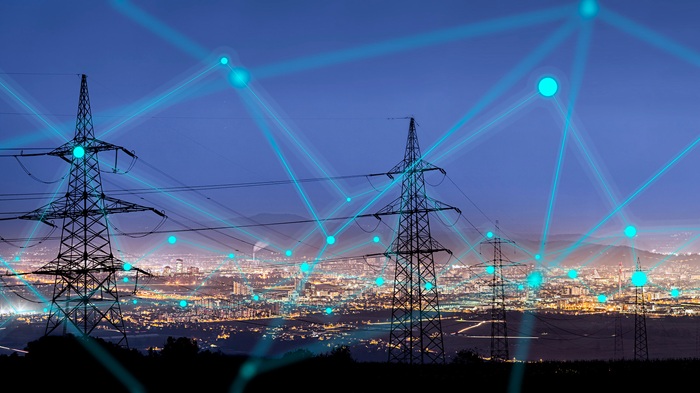The power grid is the backbone of modern society, delivering electricity to homes, businesses, hospitals, and industries around the clock. As the demand for reliable, sustainable, and efficient energy continues to rise, traditional power grids face growing challenges — from integrating renewable energy sources to managing increased loads and preventing outages.
Enter Artificial Intelligence (AI), a revolutionary technology that is transforming the power grid by making it smarter, more adaptive, and safer than ever before. This article explores how AI is reshaping the energy landscape and what it means for the future of electricity distribution.
The Challenges of the Modern Power Grid
Modern power grids are complex networks that balance electricity supply and demand in real time. Some key challenges include:
- Integration of renewable energy: Solar and wind power are intermittent, causing fluctuations.
- Aging infrastructure: Many grids rely on outdated equipment prone to failures.
- Cybersecurity threats: Digital systems in grids are vulnerable to hacking.
- Demand spikes and outages: Extreme weather and usage patterns can overload the system.
- Operational efficiency: Maintaining balance between supply and demand requires constant adjustments.
Traditional grid management relies heavily on human operators and fixed control systems, limiting flexibility and responsiveness.
How AI Enhances Grid Intelligence
Artificial Intelligence leverages machine learning, data analytics, and automation to address these challenges effectively:
1. Real-Time Monitoring and Predictive Maintenance
AI-powered sensors and IoT devices continuously collect data from transformers, lines, and substations. Machine learning algorithms analyze this data to detect early signs of equipment failure or degradation — enabling predictive maintenance.
- Benefits: Reduces unexpected outages, lowers maintenance costs, and extends equipment lifespan.
2. Demand Forecasting and Load Balancing
Using historical consumption data, weather forecasts, and social activity trends, AI models predict electricity demand hours or days in advance. This allows utilities to optimize power generation and distribution.
- Benefits: Improves grid stability, reduces wastage, and supports integration of renewables.
3. Smart Grid Automation
AI enables automated control systems that adjust voltage, reroute power, and isolate faults without human intervention. Self-healing grids can quickly respond to disturbances, restoring service faster.
- Benefits: Minimizes downtime, enhances resilience against failures and cyberattacks.
4. Renewable Energy Integration
AI algorithms optimize the use of solar and wind resources by forecasting generation capacity and adjusting load distribution accordingly. This helps maintain consistent power quality despite renewable variability.
- Benefits: Increases renewable penetration, reduces reliance on fossil fuels.
5. Cybersecurity Enhancements
AI-powered security tools monitor network traffic and detect anomalies indicative of cyber threats. They can proactively block attacks and safeguard critical infrastructure.
- Benefits: Protects the grid from hacking, data breaches, and sabotage.
Real-World Examples of AI in Power Grids
- Google DeepMind & UK National Grid: DeepMind’s AI helps predict electricity demand and manage energy storage, improving efficiency and lowering carbon emissions.
- Siemens Smart Grid Solutions: Siemens uses AI to monitor grid health and automate fault detection, enhancing reliability.
- ABB Ability™: ABB’s AI platform optimizes power plant operations and grid performance globally.
The Future: AI-Driven Decentralized Grids
The traditional centralized grid is evolving into a decentralized, “smart” grid where energy is generated, stored, and consumed locally. AI will be crucial in managing these complex networks, coordinating distributed energy resources like rooftop solar panels, electric vehicles, and home batteries.
- Peer-to-peer energy trading: AI platforms enable consumers to buy and sell excess energy directly.
- Microgrid management: AI optimizes smaller, independent grids ensuring reliability during main grid outages.
Challenges and Considerations
While AI promises enormous benefits, it also brings challenges:
- Data Privacy: Handling vast amounts of user data requires strict privacy measures.
- Cost and Infrastructure: Upgrading existing grids to support AI can be expensive.
- Skill Gap: Utilities need trained personnel to implement and manage AI systems.
- Reliability: AI systems must be thoroughly tested to avoid errors affecting the grid.
Conclusion
Artificial Intelligence is revolutionizing the power grid by enhancing its intelligence, resilience, and security. From predictive maintenance to smart automation and cybersecurity, AI empowers utilities to deliver cleaner, more reliable electricity to consumers worldwide.
As AI technology continues to advance, it will play an increasingly vital role in shaping a sustainable energy future — one that is smarter, safer, and more efficient.
Stay tuned to electriccounselor.com for the latest updates and expert insights on how AI and other cutting-edge technologies are transforming the electric world.



